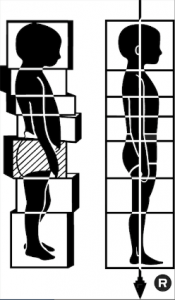Rolfing Made Easy
For more information about Structural Therapy, please visit our About page
What do I wear to my Rolfing session?
Please BRING OR WEAR appropriate clothing. Rolfing is traditionally done with the client in their underwear; however, you may wear gym attire if you feel more comfortable.
Please do not wear clothing that is bulky or restricts movement. Please be sure to wear shorts that fall above the knee – long, baggy shorts make identifying structural imbalances difficult.
You are welcome to change once you arrive at the office.
How frequently should Rolfing sessions occur?
Rolfing sessions are typically done a week apart for a few weeks. This does not fit everyone’s schedule or needs. Two weeks between sessions is also great. Everyone’s bodies and lifestyle needs are different. I typically will not schedule someone for twice in the same week unless we have worked together before and are working on something very specific.
What exactly happens during a Rolfing session?
The session begins with a walking analysis. The client walks and tries to give words to the different sensations in their body while the Rolfer watches to see where the body is moving freely and where it is restricted.
The client will then either sit on a bench for seated back work or lay in various positions on the table for manual therapy. In order to see the progress of the work and to help the client map their bodies- several times throughout the session the client will walk and feel their bodies.
There is a broad array of touch used, from very superficial working with the nerves to deep into the belly of the muscle as well as very targeted work at the attachment and insertion points of the muscles.
What is the difference between Rolfing and Massage?
It is important to me that clients are not expecting a relaxing massage. Rolfing is a healing modality where both the client and the practitioner are actively working together to give the body more ease and less pain as it moves through space.
What is the difference between Rolfing and Chiropractics?
A chiropractor is primarily concerned with the skeletal system, whereas a Rolfer is working with all the soft tissue structures that attach to the skeletal system. The skeletal system is ultimately made up of a very similar molecular matrix as the soft tissue, which is one of the reasons why Rolfers are also so successful with some skeletal maladies like bunions.
Will I revert back to my old bad habits?
Some habits evolve during the Rolfing process that completely skip over the conscious mind- such as walking with a supple psoas; whereas others require dedicated mindful attention to break. It is possible that you will not revert back to your old habits and you will be good to go after a few sessions.
Some people do require a ‘tune up’ session in order to maintain. Every body is different and wonderful!
Does Rolfing hurt?
Rolfing has a bad reputation for being a very painful modality. While there will most likely be some more intense feeling in areas where movement has been restricted for sometime, the goal is to keep the client in their body. The idea is not to bring the client into a ‘fight, flight or freeze’ state. If something feels painful, please speak up and I will adjust the pressure.
What are your rates or prices?
Sessions are about 75 minutes and $150 per session. You will not be turned away for lack of funds; I am willing to have payment conversations.
In home sessions are also available for additional fees.
Who should or should not receive Rolfing?
Rolfing is for everyone!
**If you have a contagious skin condition please make sure to communicate this to the practitioner we will find ways to work through various material on your body.
If you are pregnant or menstruating, please mention this as well as it may alter techniques and positions used.
